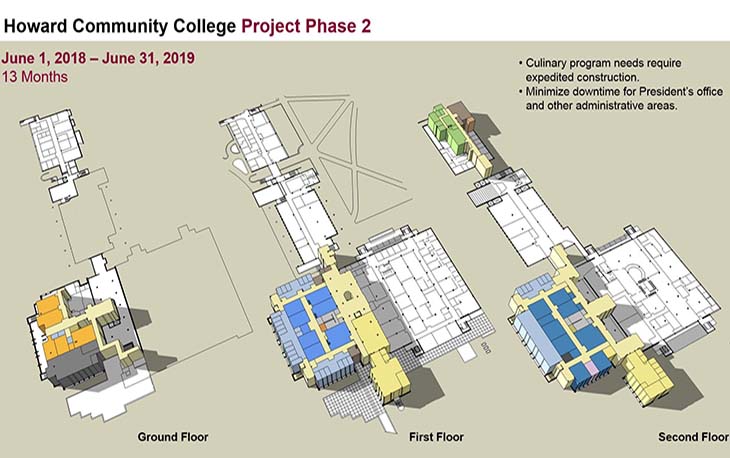Experiential Learning
An important goal of successful classroom building design is to balance capacity with performance. Traditional classrooms create this balance by focusing student workspaces towards a teaching wall. By placing students in rows of desks or tables, the amount of circulation space was minimized. This configuration created a high student/ teacher ratio in a relatively compact space. This model is now being transformed by a pedagogical shift to experiential learning. This requires a more flexible classroom where the instructor moves throughout the room. The focus in this model is on the student and their work as opposed to a central teaching wall. Often this model involves collaborative student work. Therefore, the furniture layout must be flexible to accommodate different configurations of group sizes. Now the challenge is finding the ideal student / teacher ratio for this model of experiential learning, as opposed to how many students can fit in this room.
Howard Community College–NST Building Renovation
This question was explored for the NST Building Renovation at Howard Community College. MCA worked collaboratively with SLAM to design the 63,000 NSF renovation. The project goals were to provide state-of-the-art learning environments, support teaching excellence, and enhance collaboration. The existing building had a wide variety of classroom and laboratory sizes. The design team proposed greater uniformity by identifying an ideal class size of 28, rather than the program requirement of 40.The design team also evaluated flexible classroom design options to allow all classrooms to be arranged in multiple configurations.
Supporting Student Success
Howard Community College is highly invested in the creation of flexible, effective learning environments that maximize the opportunity for student success. The value of experiential, collaborative learning is well-established. By providing facilities that can accommodate a variety of activities (including lectures, demonstrations, small group work, and multi-media presentations), Howard Community College supports the various learning styles of their students.


